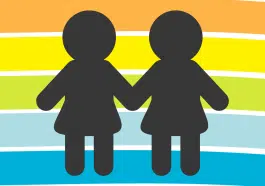LGBTQ+ Facts
Paris, France, is a welcoming community for LGBTQ+ folks, with many LGBTQ+-friendly accommodations, restaurants, and nightlife. In particular, The Marais district is known as Paris’ LGBTQ+-friendly region, with venues and other establishments that appeal to the queer community. For more about what to do and see when you’re an LGBTQ+ visitor or resident in Paris, visit Paris Info.
Mental Health in Paris, France
Depression is the most commonly experienced mental illness in France, with an estimated 5% to 15% of the population at risk for a depressive episode at some point during their life. Depression can occur at any age, even in children. About 3% of children in France are affected by depression, and about 10% to 15% of adolescents. Every year in France, there are about 12,000 deaths by suicide, with a person dying by suicide every hour of the day.
Looking for mental health care for children in Paris? Our resources at LGBTQ and ALL provide access to psychologists for kids in Paris and surrounding regions so that you can get the mental health care you need.
Top Features for Paris, France
Paris is the capital of France and is a world-famous and significant European city. It is a global hub for art, fashion, gastronomy, and culture. In addition, it features a 19th-century cityscape with wide boulevards, with the River Seine flowing through the city. And, of course, there are iconic landmarks in Paris like the Eiffel Tower and the Gothic Notre-Dame cathedral.
Other notable attractions in Paris include Versailles, the Louvre, Musée d’Orsay, Sacré-Coeur, Champs-Élysées, the Moulin Rouge, and many more.
Facts
- Paris is nicknamed the “City of Light,” and there are two theories about where this nickname originated. First, there is the theory about how light signifies the intellectuals in Paris, like writers, artists, and academics, drawn to the city. The other theory suggests that Paris was one of the first European cities to adopt street lighting.
- The Louvre is the most extensive art gallery and museum globally, containing over 38,000 pieces of art. It is also home to the famous Mona Lisa painting.
- Even though you may think that the Eiffel Tower is the most visited monument in Paris, it’s only ranked fourth among the top sites in Paris. Instead, the cathedral Notre-Dame ranks first, then the Sacré-Coeur Basilica and the Louvre Museum.
- One of the strangest facts about Paris is the condition of Paris syndrome. This condition occurs most often among Japanese visitors because the Japanese media portrays Paris as the most romantic destination worldwide and doesn’t show all aspects of Paris. As a result, some Japanese people are disappointed upon arrival because the city doesn’t meet their expectations.
- The government of Paris has passed a resolution that prevents Tom Cruise from becoming an honorary citizen. Since people in France view Scientology as a cult and a group of which Tom Cruise is a member, they don’t want to be associated with him. In 2005, Tom Cruise requested to become an honorary citizen of Paris, but the government blocked his attempt due to his affiliation with Scientology.
History/Data
Paris’ history dates back to around 259 BC. At that time, the Parisii, a Celtic tribe, had settled on the banks of the Seine. Then, in 52 BC, the Romans conquered the fishing village, and a Gallo-Roman town, Lutetia, was founded. During the fourth century, this city changed its name to Paris.
In 2019, the population of Paris was 2.161 million people.






